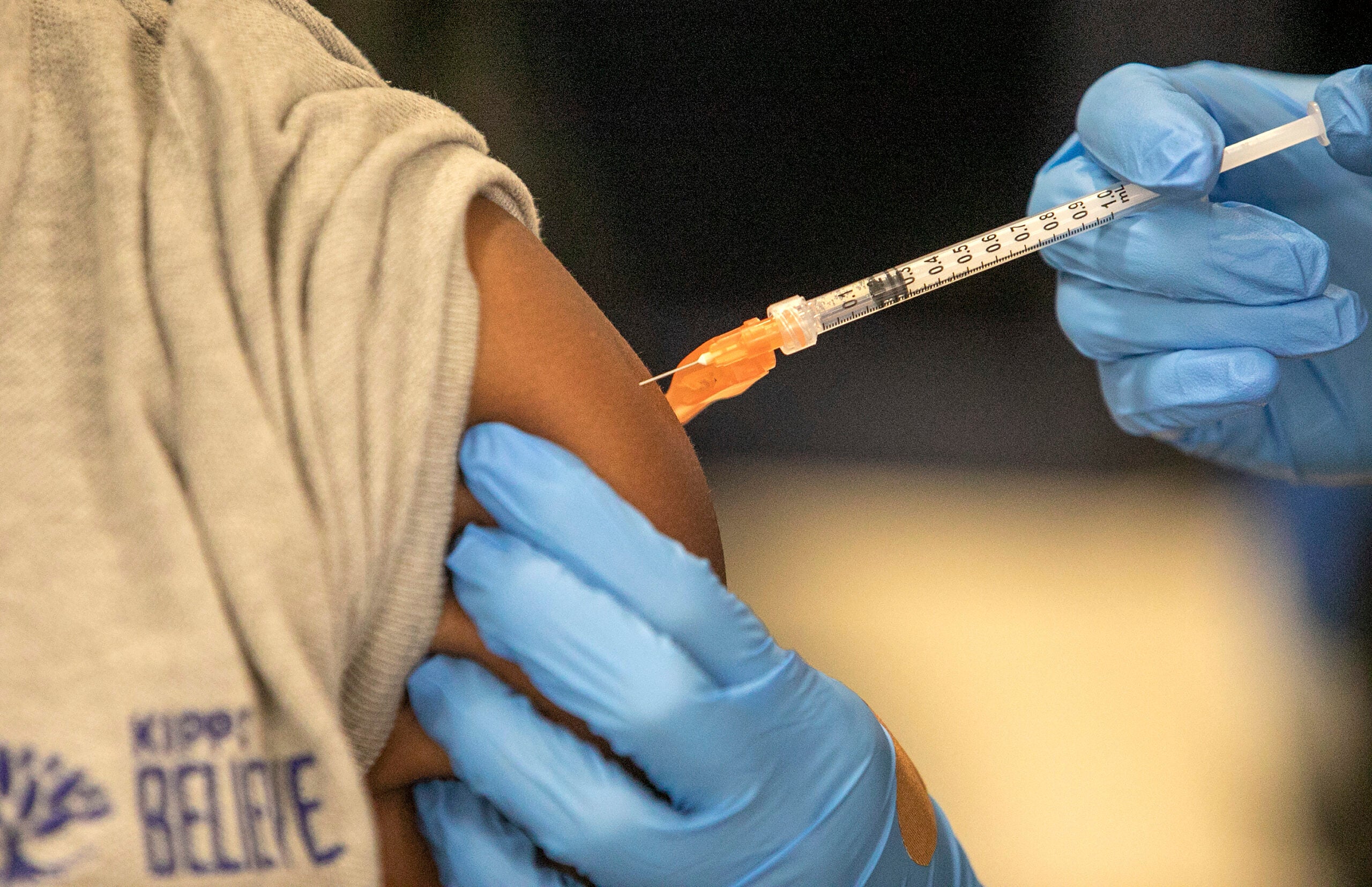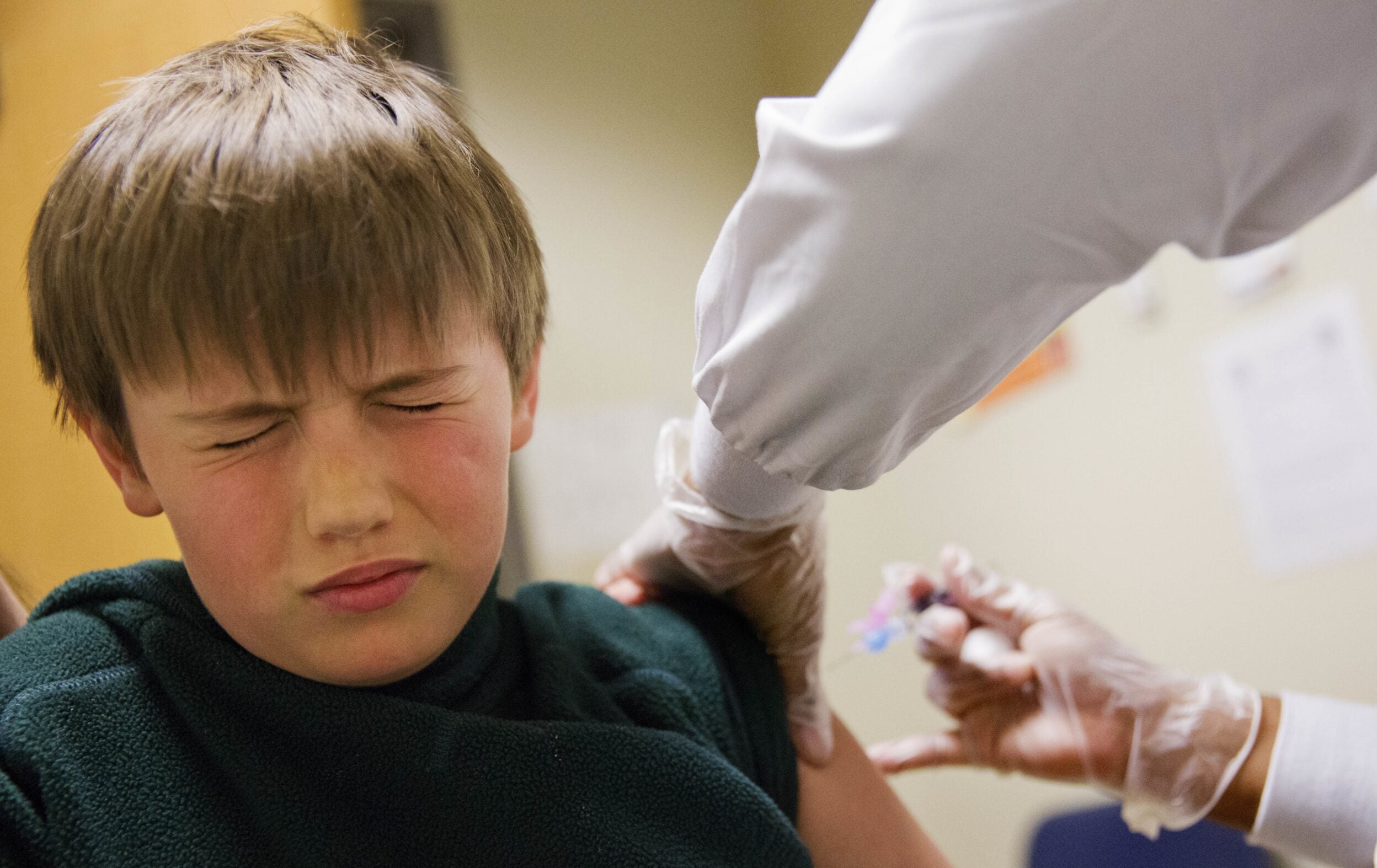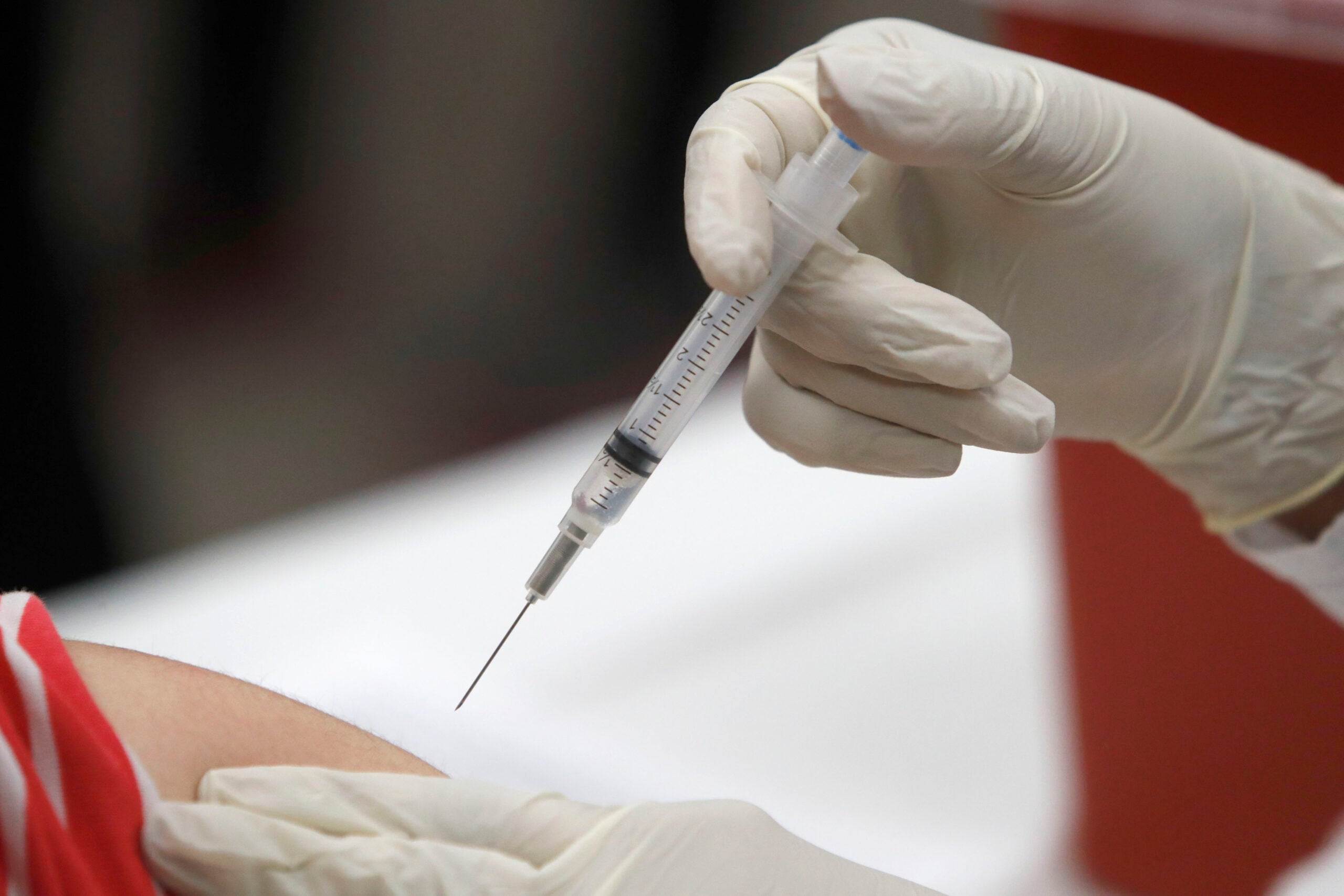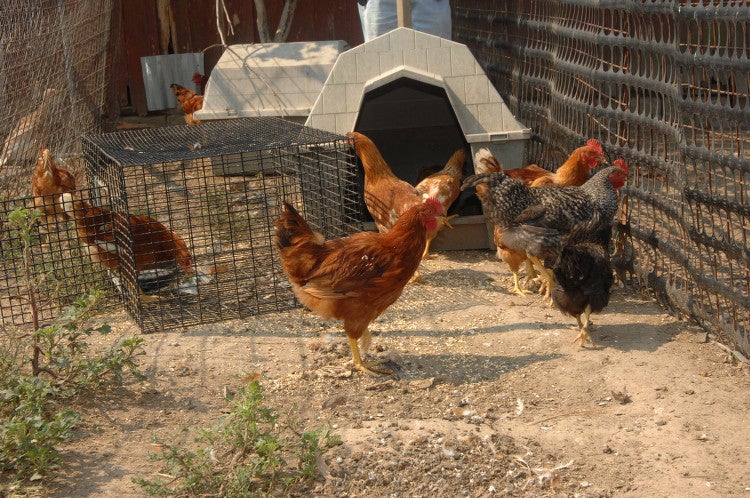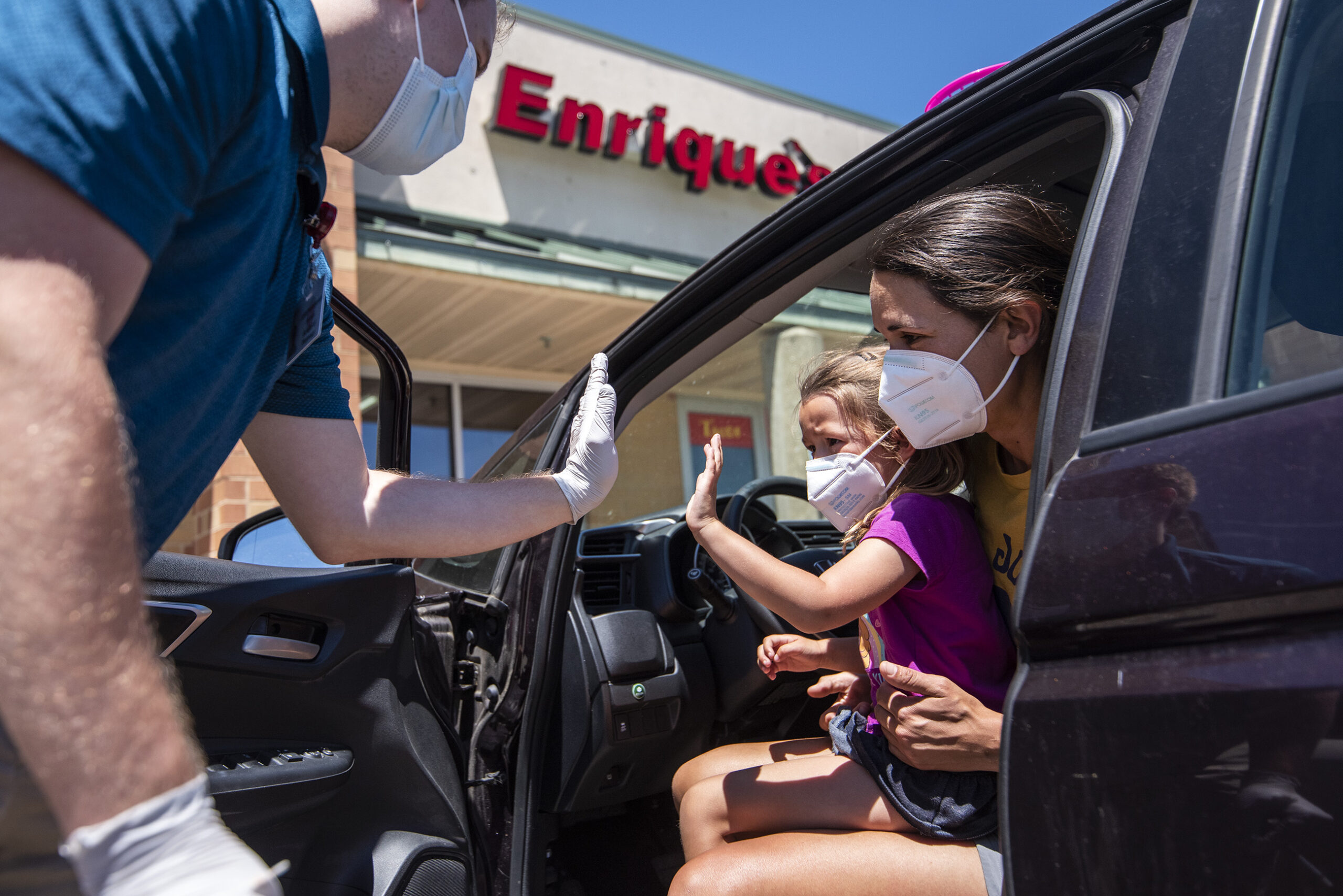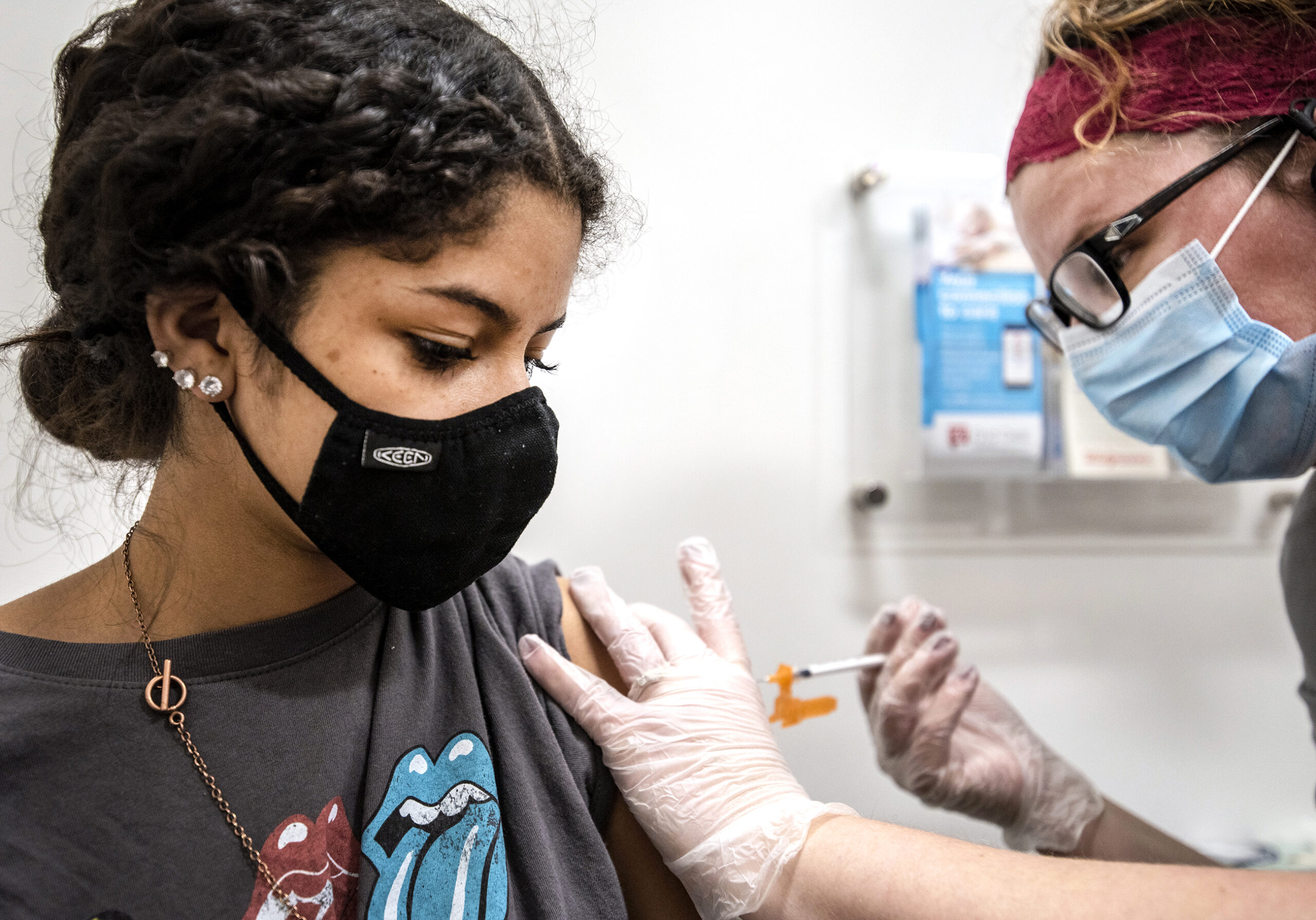COVID-19 activity has increased by about 50 percent since October, according to Dr. Ryan Westergaard of the Wisconsin Department of Health Services.
Dr. Westergaard joined WPR’s “Morning Edition” host Alex Crowe to chat more about how we can stay healthy this winter season.
This interview has been edited for clarity.
Stay informed on the latest news
Sign up for WPR’s email newsletter.
Alex Crowe: How are things looking as far as COVID cases across the state right now?
Dr. Ryan Westergaard: COVID activity has increased a bit. Overall, it’s still at a level that’s lower than the worst days of the pandemic back in 2021 and 2022.
There are three main sources of information that we look at to get a sense for how much COVID is going around in Wisconsin. These are the number of people who are hospitalized with COVID, the percentage of COVID tests that are performed in laboratories that are positive, and the level of COVID virus that’s detected in samples taken from wastewater treatment facilities. All three of these indicators are saying that COVID activity has increased by about 50 percent since October.
AC: We know that COVID is obviously on the rise looking at that data. Do we have any data to show other respiratory illnesses? We’re heading into this cold and flu season. What are some things people can do to reduce their chances of getting sick?
RW: I’m glad you brought up the term “cold and flu season.” That’s traditionally how we’ve referred to late fall and early winter, as cold and flu season. We’re encouraging people to think of it now as respiratory virus season, because if someone comes down with cold-like symptoms, it’s almost certainly due to a virus. The big three viruses in particular — those being influenza, COVID-19 and RSV — are the most important in terms of severe disease.
Also, we have new tools that have not been available in previous seasons to protect against severe disease. Updated flu and COVID shots are widely available in pharmacies. Now is the ideal time to get vaccinated if you haven’t had them yet this fall.
AC: When someone thought they had COVID, a few years ago, if they had the sniffles, that was stay home, test, make sure you don’t infect anybody else. Now it seems like there’s more of a shift in culture back to where it was before 2020. They’re going to power through and maybe go to work.
If someone does have something that they’re not sure if it’s COVID or not, what’s the best course of action to go about trying to make sure they can keep others safe?
RW: I’m glad you brought that up as well, particularly around the idea of home tests, because there had been a pause on the availability of free COVID tests earlier this year. Since Nov. 20, the U.S. government has resumed the program where every household in the country can sign up online and get four or more rapid COVID tests delivered to them for free in the mail. To do this, you go to covid.gov/tests.
I’d say it still is important if someone gets a sniffle to know whether it’s COVID. Because while these days, most people have some level of immune protection, it can still make vulnerable people very sick. So going to work and going to gatherings — people might feel up to it, but knowing that you have COVID is an important thing. Because there may be vulnerable people there who could get very sick from COVID.
So it is different than it was in the past. Fortunately, we have new tools to help people know whether they have COVID and also medications to prevent people from requiring hospitalization if they do test positive.
People should enjoy gathering for the holidays. I’d say that these days, it’s very difficult to completely avoid being exposed to a respiratory virus. Being up to date with COVID and flu vaccines is the best strategy that we’ve got to minimize the chances of becoming seriously ill if and when we do.
AC: Is there anything else that we should be aware of as we head into not only gathering for Christmas and New Year’s, but then that bitter cold that’s going to force us indoors for a few months after?
RW: There’s one specific point that I’d like to emphasize just because people don’t know about it very much. There is a new vaccine for RSV that can be given to pregnant people. It’s called Abrysvo. It’s recommended to be given after 32 weeks of pregnancy, to protect newborns from developing RSV disease and keeping them out of the hospital. RSV is a virus that can be very serious for young infants. It’s actually the No. 1 reason that little babies get admitted to the hospital. So knowing that there’s other tools like this new maternal vaccine is good for folks.
Wisconsin Public Radio, © Copyright 2025, Board of Regents of the University of Wisconsin System and Wisconsin Educational Communications Board.
